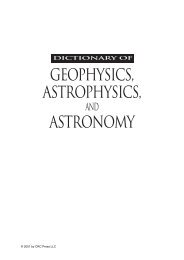tc dokuz eylül university institute of social sciences translation and ...
tc dokuz eylül university institute of social sciences translation and ...
tc dokuz eylül university institute of social sciences translation and ...
You also want an ePaper? Increase the reach of your titles
YUMPU automatically turns print PDFs into web optimized ePapers that Google loves.
substitutes for the entity or in which a part substitutes for the whole” (Tymoczko,<br />
1999; 42).<br />
For example, references to significant places or key<br />
historical events or kinship patterns can serve to locate a<br />
literary work within a larger context <strong>of</strong> time, space, <strong>and</strong><br />
<strong>social</strong> structure, thus evoking those larger cultural contexts.<br />
In this regard, such cultural elements within a literary work<br />
are metonymic evocations <strong>of</strong> the culture as a whole,<br />
including its material culture, history, economy, law,<br />
customs, values, <strong>and</strong> so on. Metonymic structures within<br />
literary texts are, therefore, densely woven, referring to<br />
various aspects <strong>of</strong> the literary system <strong>and</strong> to other cultural<br />
systems alike (Tymoczko, 1999; 45).<br />
As for the <strong>translation</strong>, it is beyond rewriting or retelling <strong>of</strong> something but<br />
more like creating a new story while rewriting the text. Tymoczko deals with the<br />
question <strong>of</strong> how a translator is to translate such works which are unfamiliar <strong>and</strong><br />
foreign to the target reader. In her study, she prefers to cover only the marginalized<br />
literatures in the polysystem. While a marginalized text is a retelling or rewriting for<br />
its original audience, it is not for the receiving audience <strong>of</strong> a <strong>translation</strong> <strong>of</strong> the text.<br />
The translator is in the paradoxical position <strong>of</strong> “telling a new story” to the receptor<br />
audience. The more remote the source culture <strong>and</strong> literature, the more radically will<br />
new the story be for the receiving audience (Tymoczko, 1999; 42). So, the poem<br />
given above is an example <strong>of</strong> how some parts <strong>of</strong> a source text belong to the<br />
traditional literature <strong>and</strong> how the author rewrites them. From that point, it is clearly<br />
seen that this already rewritten poem is either to be recreated or literally translated, in<br />
both <strong>of</strong> which cases the <strong>translation</strong> will be metonymic, i.e. partial but never total or<br />
complete, capturing every aspect <strong>of</strong> the source text (Tymoczko, 1999; 54-55, also<br />
Catford <strong>and</strong> Venuti ibid).<br />
There are many metonymies in Alice in Wonderl<strong>and</strong>, referring to British<br />
history, literature <strong>and</strong> myths. They will be studied <strong>and</strong> exposed in chapter 3 in the<br />
context <strong>of</strong> metonymy including other elements as well as puns.<br />
D. Loss <strong>of</strong> Puns in Translation<br />
Loss in <strong>translation</strong> is mostly inevitable. As for the reasons why there may be<br />
loss in a given <strong>translation</strong>, Gottlieb lists three <strong>of</strong> them in pun <strong>translation</strong>, which can<br />
26
















